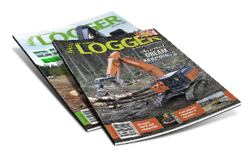
For many people, the romance of forest work is the sound of a two-stroke engine. While the concept of a chainsaw was first used 200 years ago in medicine to cut bone, portable gasoline-driven chainsaws for cutting wood became commercially available from the 1930s. This is considered a milestone in forestry that improved efficiency and reduced labour effort. The bulky two-man chainsaws of the early days are not comparable to modern standards; numerous improvements in a short period made the chainsaw the logger’s first choice.
Today with technical features such as chain break, quick start, vibration damping, even electronic fuel injection, chainsaws have progressed to compact, hi-tech machines. Even with our focus on mechanising all aspects of operations, chainsaws remain relevant in professional operations e.g. for large dimensional trees or cut blocks of small scale, where mechanised operations are not efficient.
Despite continuing technical improvements to reduce hazards, the compact and powerful combustion engine remains the heart of a chainsaw. While Hand-Arm Syndromes are significantly reduced by anti-vibration systems, they cannot be fully eliminated due to the piston movements in the engine. The use of alkylate fuels has reduced the toxicity of exhaust fumes, but fuel emissions cannot be eliminated from a combustion engine. And despite romanticising the chainsaw’s sound, hearing damage due to noise strain over the entire work day is still an issue.
Electric power tools have the potential to reduce, and in terms of exhaust fumes, even completely avoid these hazards. Interestingly, the first chainsaws pioneered by Andreas Stihl were electric driven, but energy supply and compact construction issues gave precedence to two-stroke petrol engines in forestry. The recently increased power range and improved battery capacities has raised the interest of forestry professionals, creating a general market opportunity for the next generation of cordless chainsaws.
New developments are being brought to market targeting professional users, for example the Stihl MSA 220 C-B, with powerful 36 V lithium-ion batteries and a chain speed of 24 m/s. First field trials in Germany are evaluating this as a potential alternative to the conventional MS 201 C-M, a professional grade thinning saw with a displacement of 35.2 cc and 2.4 hp. Both saws are comparable in their operational capacity for early, pre-commercial thinnings, with the battery load and tankful lasting about the same time intervals. General handling of the saws is similar, since both have an operational weight close to 5 kg, excluding guide bar and chain. Besides the general occupational health advantages of the electric saw, another asset is the direct start and availability of the full power range, making cold start issues and related wear a thing of the past.
In terms of cost, there is already not much...





